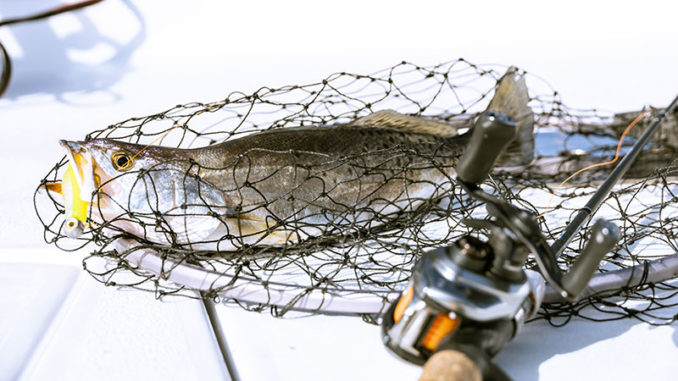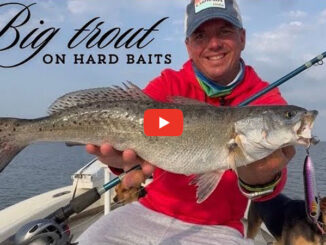
You would have to be older — and I am — to remember when football was played like this: college football teams punted on third down with hopes of pinning the opponent deep inside the opposition’s end of the field. For you non-football fans, most teams punt on fourth down now.
Consult the older, maybe much older, football fans around you to explain this strategy more indepth, but know it was a part of the game in the 1950s and early ’60s. And, if memory serves, Ole Miss’ Jake Gibbs punted on third down to Billy Cannon on that Halloween night for that memorialized 89-yard return, a run repeated on most Louisiana TV stations every Oct. 31 since.
Today, it looks like our Louisiana Wildlife and Fisheries Commission has taken a page from that long-ago shuttered part of the playbook.
To wit: we’ve had four years of wrangling over this speckled trout issue.
And, this seven-member commission continues to punt, to continually kick this issue with little hope of gaining any advantage in what most everyone knows is a depleted speckled trout population.
There’s little to gain here by recounting every detail of our Wildlife and Fisheries marine biologists’ initial stock assessment, all the public hearings, another stock assessment, more public comment, the commission’s approval of new regulations — a 13.5-inch minimum size and a 15 fish daily creel — and the state legislature’s rejection of those new regs. No need for you to get a headache, too.
No progress
Just know this. Today, we are not much closer to advancing toward rebuilding our speckled trout stocks than we were in 2019 when the issue of declining trout numbers was raised. Not very impressive.
The gut-wrenching part comes during the last five months. Two commission members volunteered to meet with user groups to hammer out an agreement on what the new regs should be. State biologists and managers sat in on the meetings.
Despite asking to be included, outdoors writers and reporters, and, apparently, other commission members, did not receive an invitation to these meetings.
So, when the commission convened in Baton Rouge for its July monthly meeting, the new Notice of Intent was presented, a list apparently hammered out during those semi-clandestine by-invitation-only meetings. It included:
- A slot limit, 12-19 inches, with an allowance of two trout over 19 inches
- A 15-trout daily creel limit
- Elimination of a daily catch for charterboat captains and crew, but wording allowing “…captains and crew to engage in fishing in order to demonstrate fishing for (their) clients or ‘start the bite’”
- A four-year sunset to end proposed regulations Jan. 1, 2028, and mandating a new stock assessment to be presented to the commission at its April, 2027 meeting
Louisiana Charterboat Association leader Richard Fischer said nearly 60% of LCA members agreed with the no-captain/no crew limit.
What’s more, this new proposal appeared to solve the problem the Joint (Senate & House) Natural Resources Committee had with the initial 13.5-inch minimum size restriction.
And, this new plan, state biologists testified, would reach the desired “population sustainability” numbers in 10 years — a 10-year recovery plan.
Not good enough?
Apparently that wasn’t good enough.
Fishermen working waters east of the Mississippi River complained the “two over 19 inches” part restricts their catch because in their collective words, “We catch larger fish than places west of the Mississippi River.”
Oops! So commission chairman Andrew Blanchard basically called in the punting team when he offered a basin-by-basin approach to trout management.
Oops! It’s time to stop here and write this was a proposal offered in the Baton Rouge Advocate’s Outdoors page when the initial, and dire, trout population decline was presented in 2019.
Back to the meeting: more discussion, and after Blanchard’s outline, commission member Joe McPherson offered to table the new plan until the Aug. 3 commission meeting and asked Wildlife and Fisheries staff to come up with data to support that basin-by-basin move.
Whoa! A whole new set of problems, ones that state marine biologist Jason Adriance said because it would demand running new projections and to “…see if we can by next month, but we certainly will try.”
As the risk of putting words into Adriance’s mouth, this entire discussion was based on statewide data and accurately breaking it down into three or more coastal basins will be a daunting, if not impossible, task.
OK, so now it was commission member Brandon DeCuir’s turn: he offered a 13-20 inch slot, with one fish allowed over 20 inches with a 15-fish daily limit, a plan that would reduce projected recovery time to six years. That got shot down in a 3-2 vote. Commission member Andy Brister was absent, and Blanchard’s vote wasn’t needed.
McPherson’s “table” motion passed. And the punt team returned to the bench.
Hard to figure out
It’s difficult to figure out what’s going on here. Maybe this commission is running in fear of the state legislature. It’s seldom either or both Natural Resources committees reject a commission vote, so the legislature’s veto could be seen as a shot over the bow.
Whatever it is, whatever we’ve discovered to be inherent problems when it comes to limiting the take of our state’s most popular coastal fish, it’s clear the attitudes of some of our fishermen have to change, too.
No longer can we live in the days when we measured trout catches by the number of 48-quart ice chests showed up in a day’s catch. No longer can we live in these days of 25-fish daily limits with unfettered size limits.
Those are history, and if this commission, if our fishermen can’t yield their stances — and for more than speckled trout, because redfish are in decline, too — then there won’t be a need to have a commission, marinas, south Louisiana tackle shops, boat dealers and fishing camps.
It was the advent of wide-open offenses that shooed away those third-down punts, and it’ll have to be a deliberate push for new regulations with some strong leadership.
And it’s time to stop punting.


